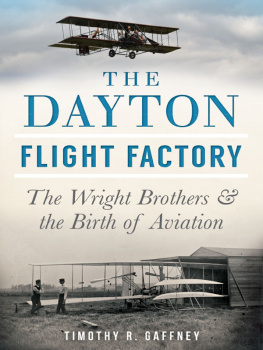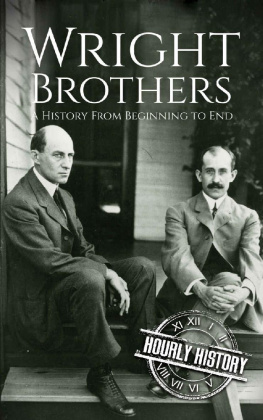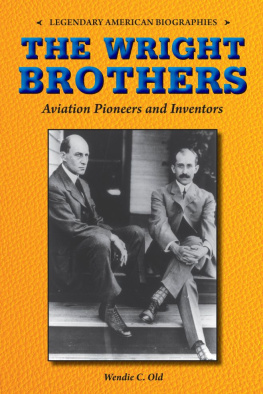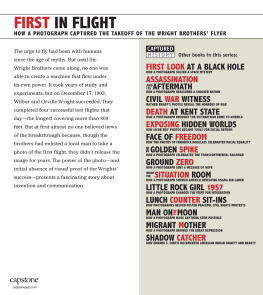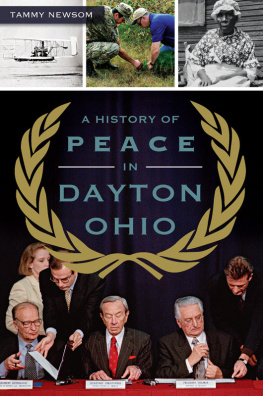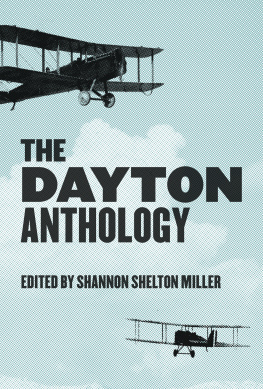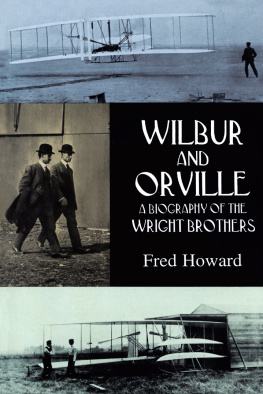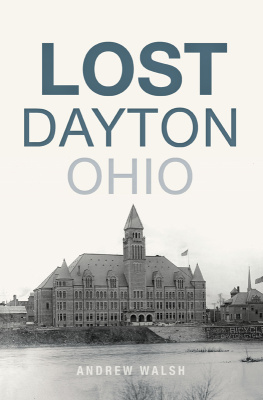

Published by The History Press
Charleston, SC 29403
www.historypress.net
Copyright 2014 by Timothy R. Gaffney
All rights reserved
Front cover: Historical photo courtesy Wright State University Special Collections and Archives. Wright B Flyer photo by the author.
First published 2014
e-book edition 2014
ISBN 978.1.62584.848.2
Library of Congress Cataloging-in-Publication Data
Gaffney, Timothy R.
The Dayton flight factory : the Wright brothers and the birth of aviation / Timothy R. Gaffney.
pages cm
Includes bibliographical references and index.
print edition ISBN 978-1-62619-356-7 (paperback)
1. Airplane factories--Ohio--Dayton--History--20th century. 2. Aeronautics--Ohio--Dayton--History--20th century. 3. Wright Company--History. 4. Wright, Wilbur, 1867-1912--Homes and haunts--Ohio--Dayton. 5. Wright, Orville, 1871-1948--Homes and haunts--Ohio--Dayton. 6. Dayton (Ohio)--History--20th century. 7. Dayton (Ohio)--Biography. I. Title.
TL522.O3G34 2014
338.76291333430977173--dc23
2014015887
Notice: The information in this book is true and complete to the best of our knowledge. It is offered without guarantee on the part of the author or The History Press. The author and The History Press disclaim all liability in connection with the use of this book.
All rights reserved. No part of this book may be reproduced or transmitted in any form whatsoever without prior written permission from the publisher except in the case of brief quotations embodied in critical articles and reviews.
To River
CONTENTS
ACKNOWLEDGEMENTS
This book is a story about the Wright brothers and the world-changing work they did in Dayton, Ohio. Many excellent books about the Wright brothers already exist, such as Tom D. Crouchs comprehensive and wonderfully written The Bishops Boys. This book tells the story with a tighter focus on what Wilbur and Orville did in and around Dayton and the places you can visit today to learn more about them and Dayton as they knew it.
Dayton is lucky to have many people who care about the story of the Wright brothers and want to share it with the pubic. Dawne Dewey, head of Wright State University Special Collections and Archives, and John L. Armstrong, Wright State archive/reference manager, gave valuable assistance in researching pictures and documents from the universitys incredible collection of Wright family materials.
Wright B Flyer volunteer pilot Tom Walters took me up in Wright B Flyer Inc.s one-of-a-kind lookalike of a 1911 Wright Model B and helped me wrap my head around certain aeronautical concepts. The whole Wright B team, all volunteers, deserves thanks for maintaining, operating and supporting a machine that offers riders the wind-in-your-hair experience of pioneer flight.
Edward J. Roach, historian at Dayton Aviation Heritage National Historical Park, aided my research by sharing his not-yet-published manuscript for The Wright Company: From Invention to Industry, the first book to focus on the Wright brothers company.
Nancy Horlacher, local history specialist for Dayton Metro Library and the friendly staff in the librarys magazine and local history rooms helped me track down a wide variety of historical materialseven searching other libraries collections to find them.
Tony Sculimbrene, executive director of the National Aviation Heritage Alliance (NAHA), recruited me to be NAHAs communications director just as the project to preserve and restore the historic Wright Company factory site was taking off. Brad White, principal at Hull & Associates, graciously gave NAHA nearly unlimited access to the site. Wandering through the now-empty buildings, straining to hear the echoes of men and women building Wright airplanes and digging into the factorys history is what inspired me to write this book.
INTRODUCTION
Inside the chain-link fence that surrounded the site of General Motors Corp.s Inland Manufacturing Division in Dayton, Ohio, a pair of long, low, brick buildings stood in near anonymity for decades. Massive manufacturing buildings surrounded the smaller structures on the fifty-four-acre site, blocking them from view. The two buildings were active facilities at what later became known as the Inland, Delco and finally Delphi Home Avenue plant, where for decades auto workers turned out parts and components for GM and the global auto industry. Few Daytonians remembered or ever knew how all that industry and all those jobs grew from these two modest buildings. Still, subtle architectural toucheswhite-painted brick instead of concrete; rows of large, arched windows along the sides; gracefully arched parapets at each endset these buildings apart and hinted at an earlier history.
And what a history it is: not simply the nucleus of a major auto parts plant, these buildings were the birthplace of Americas aerospace industry. They were the Wright Companys factory, built in 1910 and 1911 to mass-produce the flying machine invented by Wilbur and Orville Wrightthe first purpose-built airplane factory in America, according to the National Park Service. The men and women who earned their livings inside these buildings were the spiritual ancestors of todays American aerospace workers.
At this writing, nearly all other structures on the old Delphi site are gone, exposing the Wright Company buildings to public view. NAHA is working with the National Park Service and municipal, state and private partners to preserve the buildings as a unit of the Dayton Aviation Heritage National Historical Park. The Wright Company factory buildings complete the story of the Wright brothers invention, development and commercialization of the airplane.

The first Wright Company factory building in 2013. Courtesy of the National Aviation Heritage Area.
AT HOME IN DAYTON
A few blocks west of the Great Miami River in Dayton, Ohio, a short walk up South Williams Street can take you more than a century back in time.
Clapboard houses facing the brick street look much as they did at the turn of the twentieth century. The sign over the storefront of the brick building at 22 South Williams bears the name Wright Cycle Co. You can see bicycles and a sales counter through the window. Ahead, the brick faade of the Hoover Block commercial building leads to the corner at West Third Street. More than a century ago, this one-block stretch of Williams was the path Wilbur and Orville Wright walked between their home at 7 Hawthorn Street and their places of business along this two-block stretch of West Thirdincluding, from 1895 to 1897, the shop on South Williams. On this sidewalk, in this restored neighborhood, their presence is almost palpable.
The land west of the Great Miami was mainly farmland in the 1860s. The river tended to isolate the area from the main part of town. Even after Dayton annexed it in 1868, residents called it Miami City for many years. By the time the Wright family moved there, west Dayton was becoming what historian Tom D. Crouch and others call a streetcar suburb. The Dayton Street Railroad Company, formed in 1869, laid Daytons first streetcar line on West Third Street, connecting the city from east to west. The line was more to spur land development than to make money with fares. William P. Huffman, the companys president, owned land along East Third. Vice-president H.S. Williams owned land west of the river. Land that Williams sold for residential development included the lot at 7 Hawthorn. A homebuilder was still finishing the house there when Milton Wright bought it in 1870.
Next page
